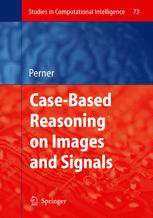

Most ebook files are in PDF format, so you can easily read them using various software such as Foxit Reader or directly on the Google Chrome browser.
Some ebook files are released by publishers in other formats such as .awz, .mobi, .epub, .fb2, etc. You may need to install specific software to read these formats on mobile/PC, such as Calibre.
Please read the tutorial at this link: https://ebookbell.com/faq
We offer FREE conversion to the popular formats you request; however, this may take some time. Therefore, right after payment, please email us, and we will try to provide the service as quickly as possible.
For some exceptional file formats or broken links (if any), please refrain from opening any disputes. Instead, email us first, and we will try to assist within a maximum of 6 hours.
EbookBell Team

5.0
50 reviewsThis book is the first edited book that deals with the special topic of signals and images within Case-Based Reasoning (CBR).
Signal-interpreting systems are becoming increasingly popular in medical, industrial, ecological, biotechnological and many other applications. Existing statistical and knowledge-based techniques lack robustness, accuracy and flexibility. New strategies are needed that can adapt to changing environmental conditions, signal variation, user needs and process requirements. Introducing CBR strategies into signal-interpreting systems can satisfy these requirements. CBR can be used to control the signal-processing process in all phases of a signal-interpreting system to derive information of the highest possible quality. Beyond this CBR offers different learning capabilities, for all phases of a signal-interpreting system, that satisfy different needs during the development process of a signal-interpreting system.
The structure of the book is divided into a theoretical part and into an application-oriented part. Scientists and computer science experts from industry, medicine and biotechnology who like to work on the special topics of CBR for signals and images will find this work useful. Although case-based reasoning is often not a standard lecture at universities we hope we to also inspire PhD students to deal with this topic.